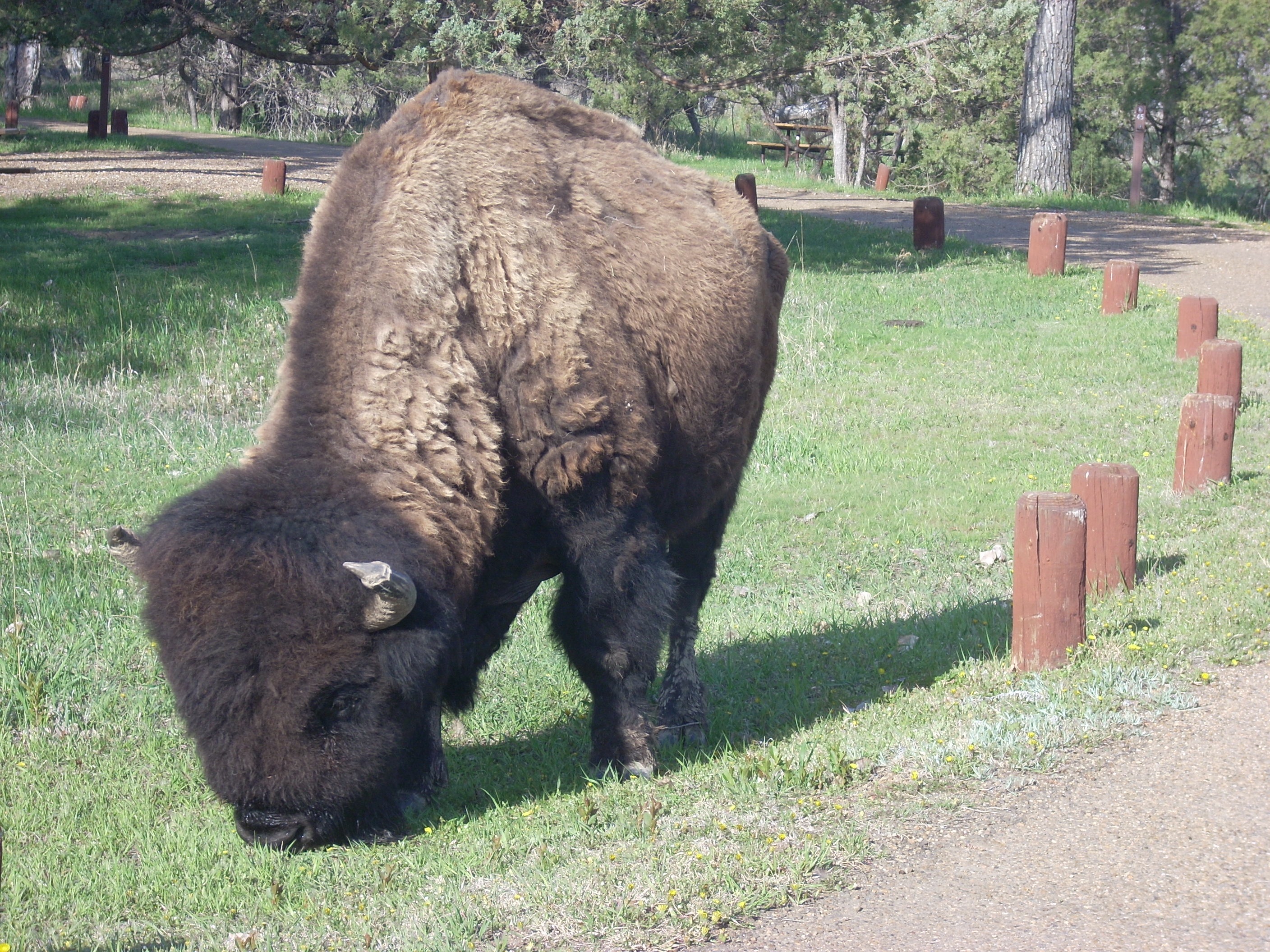
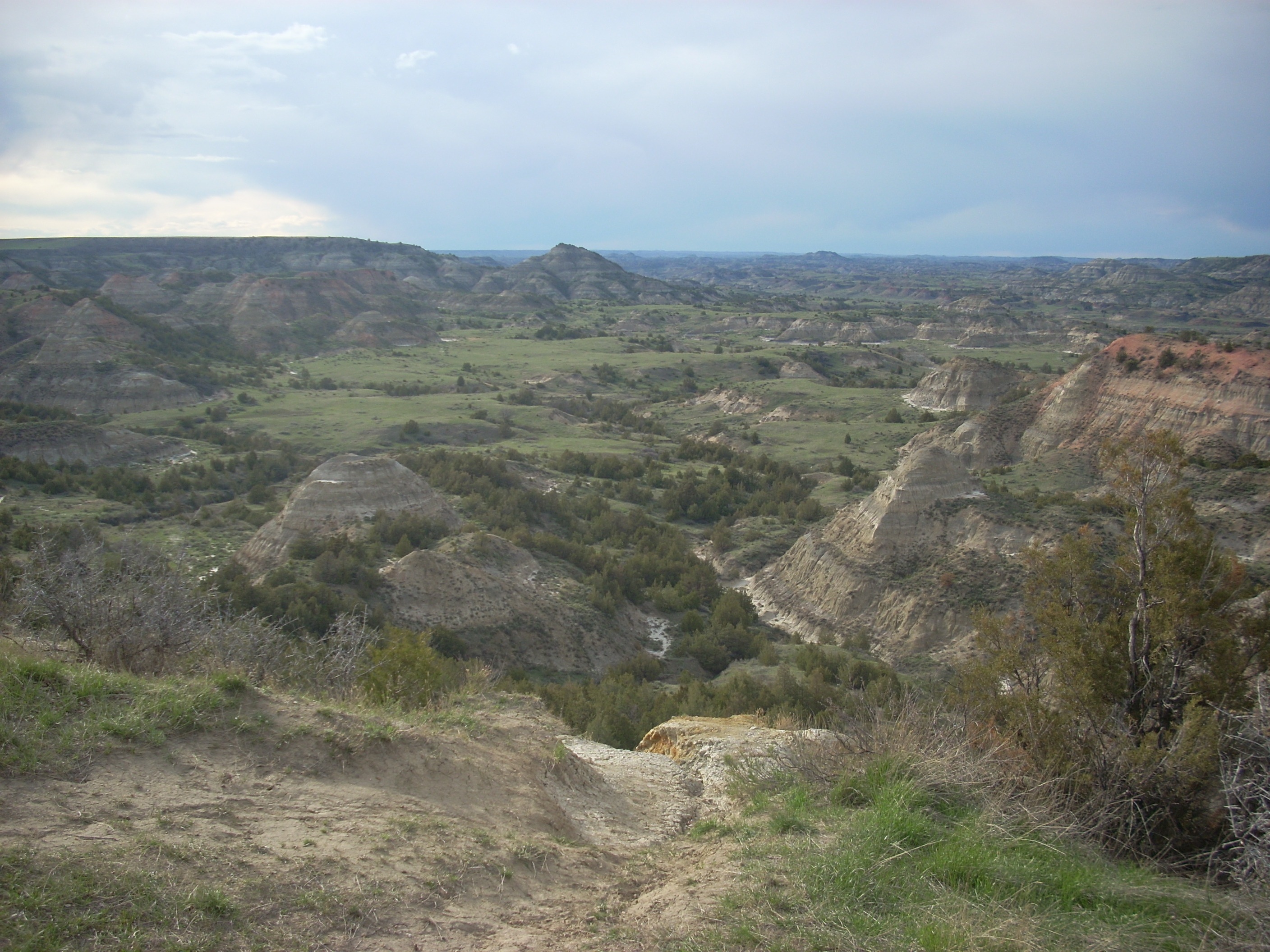
| Route 66 | Cities | Beaches |
 |
 |
Fort Benton |
Enchanted Highway |
| This is one of the greatest scenic drives of any national park. Being only 37 miles long, it could also be done as a day long bicycling trip. There are hills, but they are not long or steep, and there are valleys and plateaus in between. However, as a car adventure, it makes a fine half a day or even a full day. There are numerous pullouts and side drives, and you should do them all. There are lots of explanatory placques, and the Medora Visitor Center offers a book narrating the loop in a counterclockwise direction which is a good buy. The loop begins in Medora, at the Visitor Center, between the Cowboy Museum and Chimney Park. It heads immediately up the hill and offers you a pullout if you want a good photo of the town along the river valley below. Otherwise, it crosses the interstate and heads off across Johnson Plateau. You have two pullouts here. One is to your left, an overlook with magnificent views of the Badlands. The other is to your right, where you can sit in your car and observe a fairly large prairie dog town where its inhabitants are going about their daily affairs. A good telephoto lens helps here, but even without it, you can get some great photos. If you're the only car there, when you first pull up, many of the critters will duck out of sight into their burrows. But if you sit in your car for a few minutes, they'll reappear. Pretty soon, they'll ignore you, although their sentries will still keep a sharp eye out for hawks overhead, snakes underfoot and the usual coyotes, fox and bobcats. If you sit here long enough, you'll eventually notice how certain males in the community seem like the designated targets. When someone new pulls up and everyone dives for cover, these studs stand their ground, not too far from the nearest hole, but on their feet nevertheless. It's almost like they're showing off for the females, or daring the intruders to come after them. In the meantime they keep up a steady chatter of "chit, chit," letting everyone else know the perimeter is safe. If someone walks toward them, at the last minute they'll dive for cover, and the others will keep chitting. So dogs in their burrows can listen to the various chits and from the silent spots piece together the pattern of where the intruder is. In addition to the prairie dogs, many visitors use their villages to get good shots of the snakes, hawks, coyotes, fox and bobcat who prey on them. You just have to have patience. Bring a lunch. | 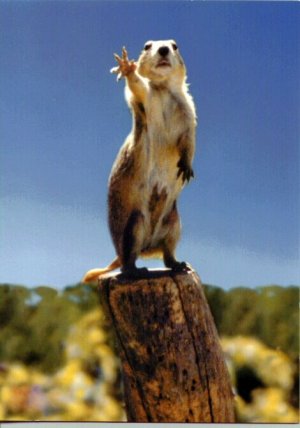 |
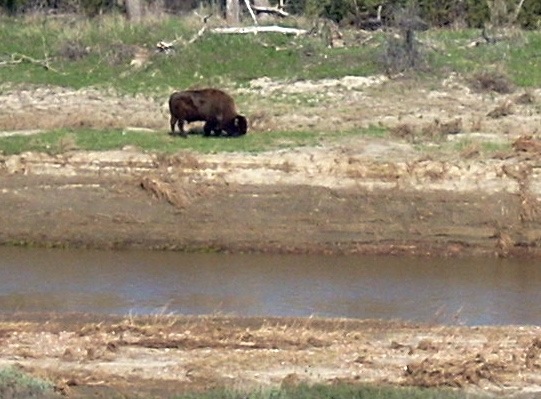 |
Dropping down off Johnson Plateau you're almost certain to see Buffalo. First, keep your eye on the river valley far below to your left. You can often see the big animals grazing in the cottonwoods along the opposite shore. This picture was taken from the road far above using a Nikon Coolpix 6.0 with its 3X telephoto extended. The South herd runs from 400-450, although it's divided into several different groups which are often in opposite corners of the park. Once you drop down to Cottonwood Flats you may get so close to Buffalo you have to stop the car and wait for them to cross. The photo top left was taken along the road coming across Cottonwood Flats. Be sure to drive through the campground. It is a beautiful facility with 76 sites along the river. There's a picnic area if you're here around lunchtime, and restrooms. You'll notice the Little Missouri River is not especially large. In Spring it can get five feet deep and offer excellent canoeing, but by July it is often too shallow for canoes and is easily waded. It's hard to believe this little river carved out these huge badlands. The truth is, it didn't. Long ago, when most of the eroding was done, this region received much more rainfall and the sidestreams and river were much wider and deeper, more like the main Missouri River is today. |
After leaving the campground, turn left, then left again, to the Peaceful Valley Ranch. After Theodore Roosevelt sold the ranch, the buildings he had constructed further up the river were dismantled. So these holdings were built so as to be much closer to town. The facilities today, which include two houses, a barn, large corrals and a bunkhouse, are the headquarters for the South Unit's horseback riding operation. Rides are available from 90 minutes to five hours and even overnight. Lessons are given. Turn left coming out the driveway of Peaceful Valley and you'll follow the flats for a short distance further. You'll come past the old Beef Corrals. When cattle were driven up the Texas Trail from San Antonio they would be brought here, then sold to Dakota ranchers. Beginning in 1883, Roosevelt's men, then the Peaceful Valley cowboys, would round up the cattle twice a year for branding and sorting. No corral structures remain today, but a large placque explains everything. Before leaving the flats, you'll pass one more very large prairie dog colony, and as you begin climbing the hill you'll pass a smaller one to your left. |
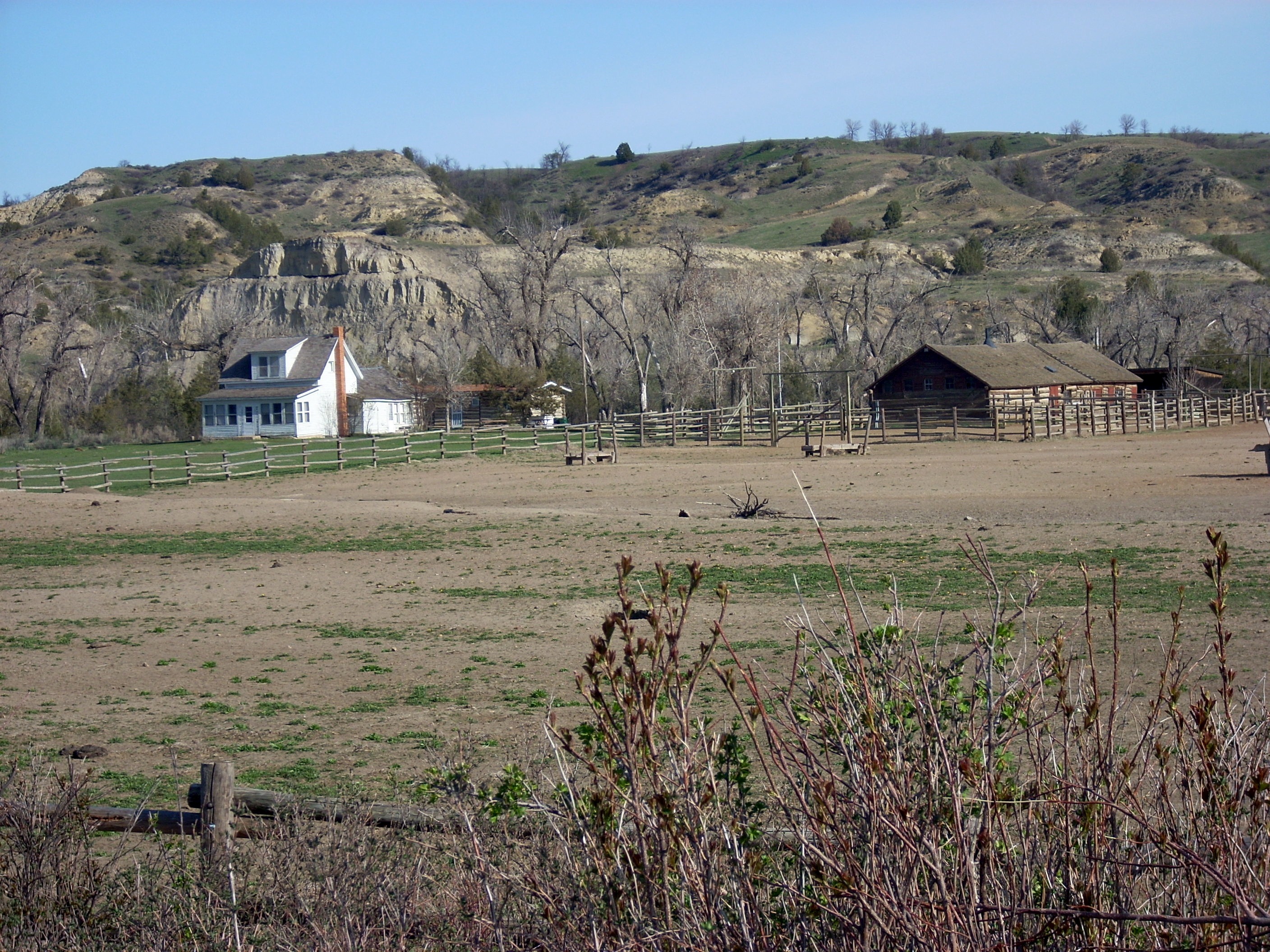 |
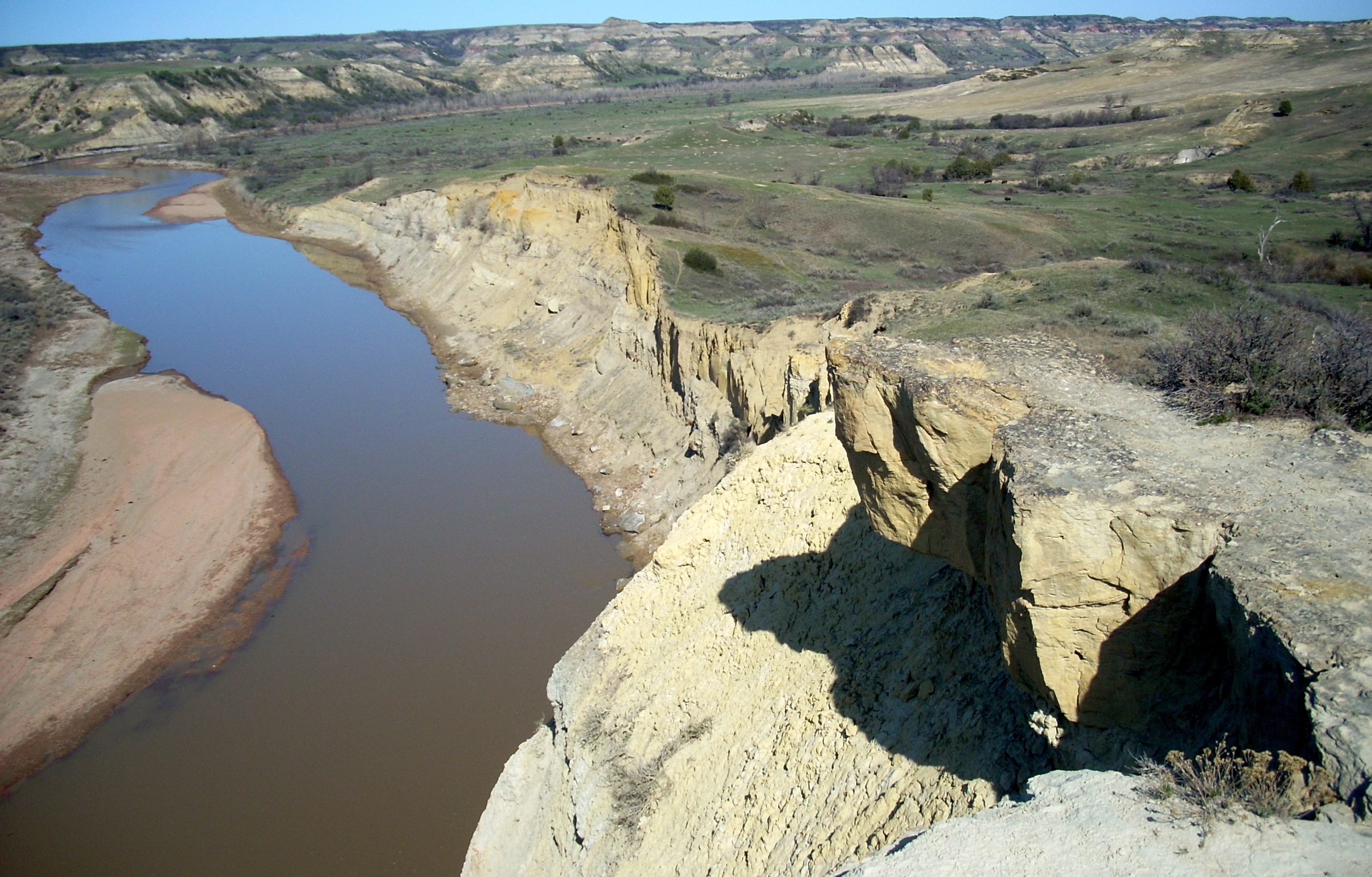 |
After a short climb, you'll come to the Wind Canyon area. You really should park at the overlook on your left and hike the 0.5 mile trail, from which this photo was taken. The Little Missouri shallows and widens here, sweeping below you in a wide arc before turning North as seen here. There are lots of wierd erosional formations here, caused by both water and wind. You can see North and West (across the river) to the boundaries of the South Unit. |
| Coming across the top of the loop, near the South Unit's northern boundary, you're most likely to see wild horses. This photo was taken from the car window without a telephoto. | 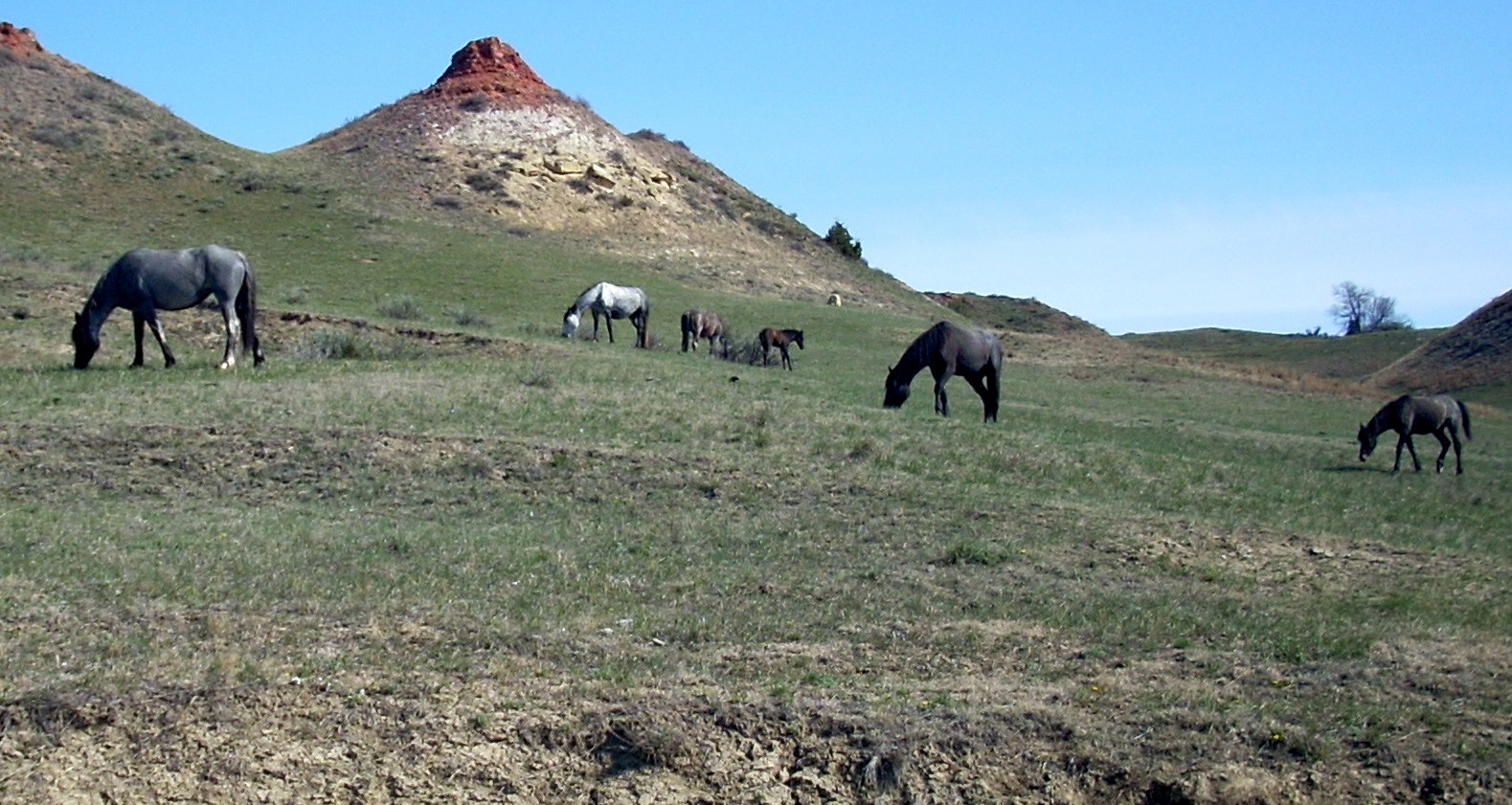 |
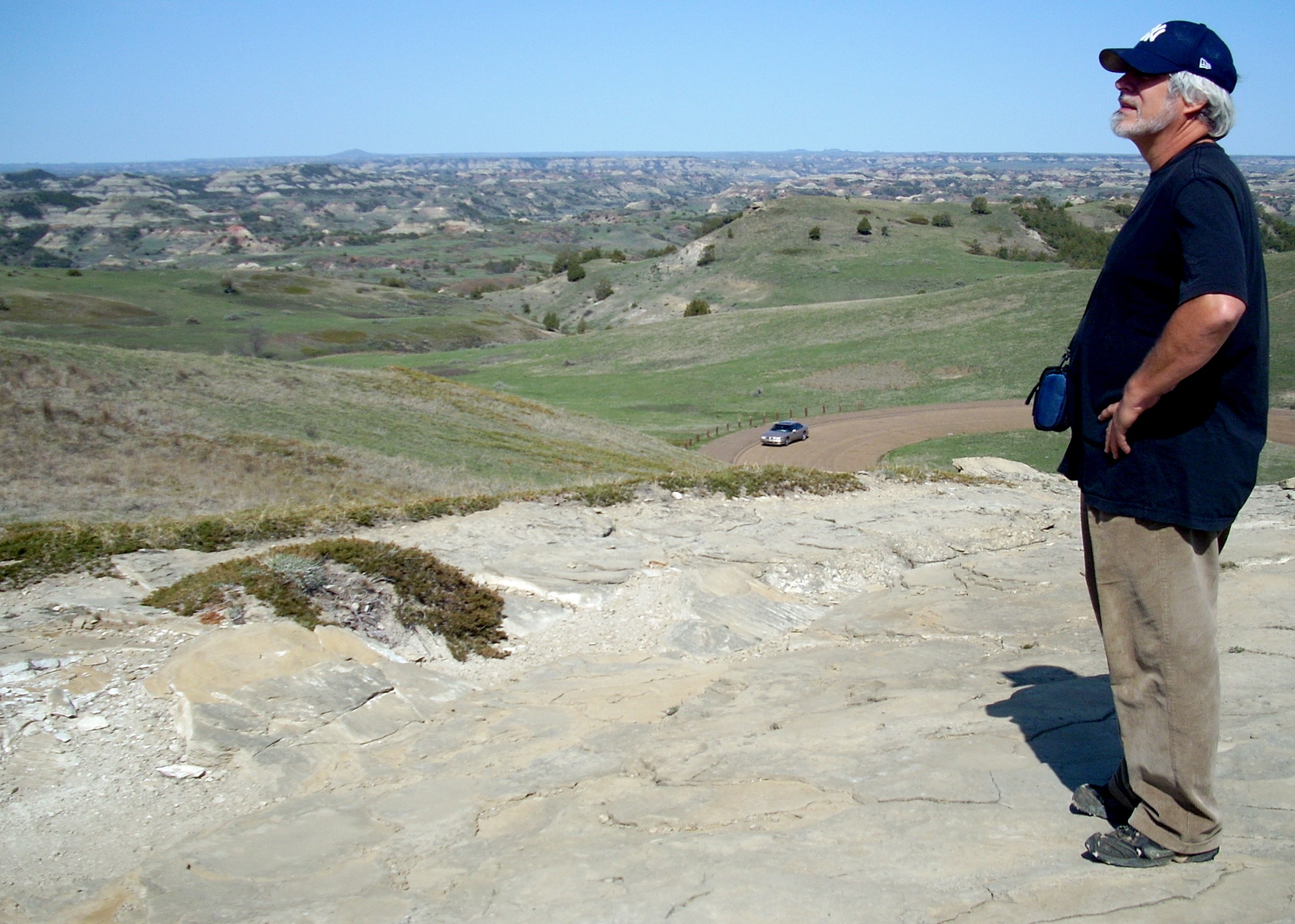 |
Buck Hill is worth the one mile side drive. It's the second highest point in the South Unit at 2855 feet. You can see 50 miles 360 degrees. The place is so named because during mating season male deer often fight over the females here. You can cut cross country from here off trail and joinTalkington or Paddock Creek trails in the valleys below. Buffalo, horses, deer and antelope often graze on the hillsides below Buck Point. This would be a great place to fly a kite. You could have someone drop you off here and pick you up at the Painted Canyon Visitor Center. From Buck Point it looks like a forbidding landscape, but you can see the trail far below, and it is not hard to work your way down to it. On the ground it is a 3.75 mile walk from Buck Hill to the Visitor Center. For a shorter walk on the wild side, you could have someone drop you off here and pick you up at the Burning Coal Vein, which is about a mile mostly down hill almost due West. |
| From a turnout, you can see this dramatic example of scoria, iron scorched by burning coal seams. Chunks of scoria are found throughout the park, but this is the largest intact block of it. | 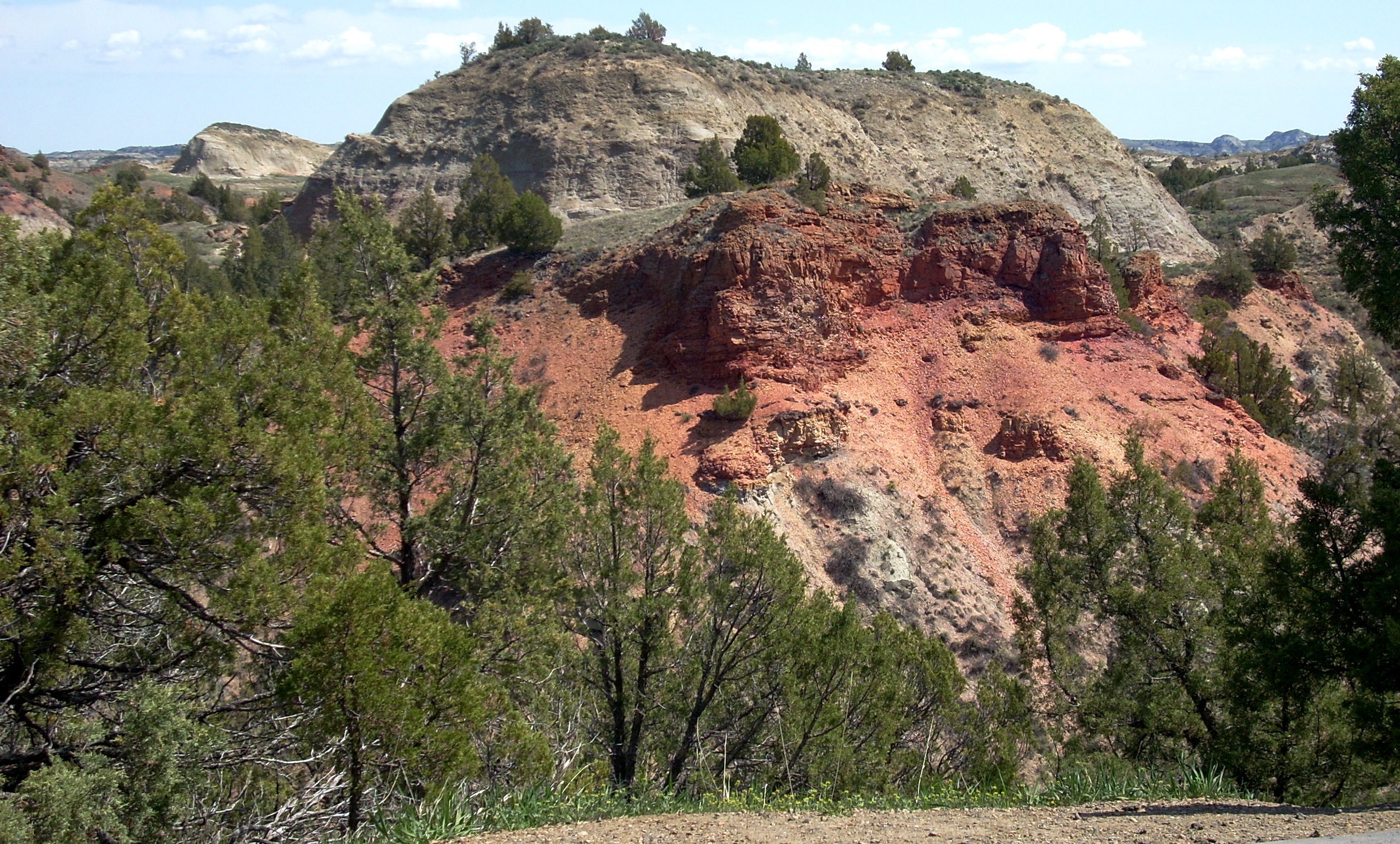 |
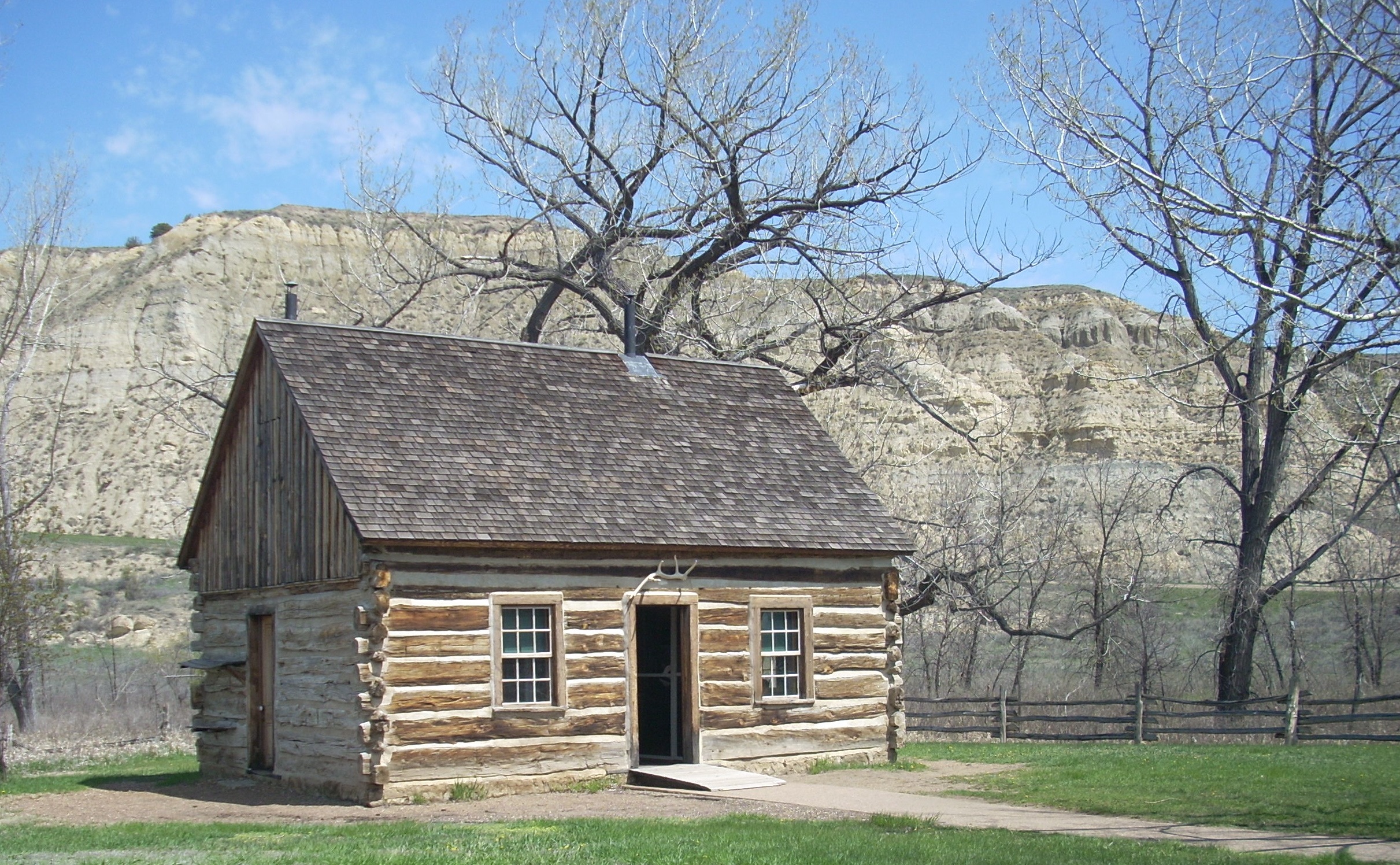 |
As you come back into town you pass Theodore Roosevelt's Maltese Cross Cabin. He stayed here first, and it still contains many of his personal furnishings. It looks like a tiny cabin but contains three rooms : a bedroom, living room / office, and kitchen. After Roosevelt expanded his operations, he built the much larger house along the river 30 miles north at the Elkhorn site. After he became president, this cabin was loaded onto a railroad flat car and hauled to Washington, Chicago and other places for people to visit. It was promoted as America's Western Walden. It was eventually brought back to Medora at Roosevelt's insistence. You can go into the cabin here, but glass panels protect his furnishings. Roosevelt did his early writing here, but his most famous books were written a few years later up at the Elkhorn Ranch. This is very typical of the kind of houses Dakota homesteaders and ranchers built and lived in between 1870 and 1920, at the peak of the open range cattle empire.
|
|
|||
|